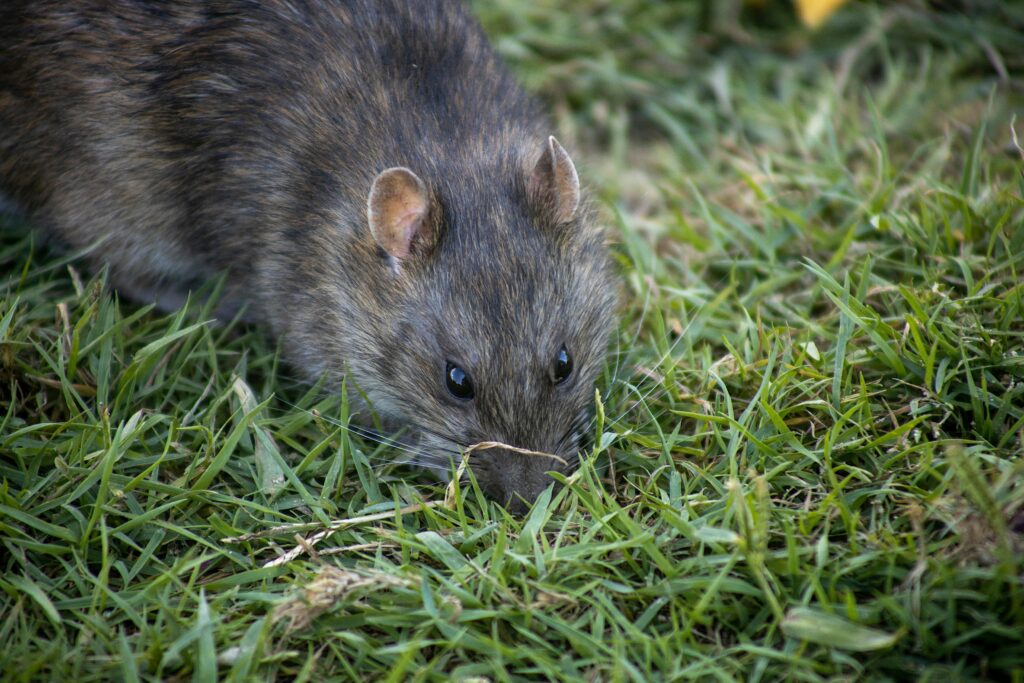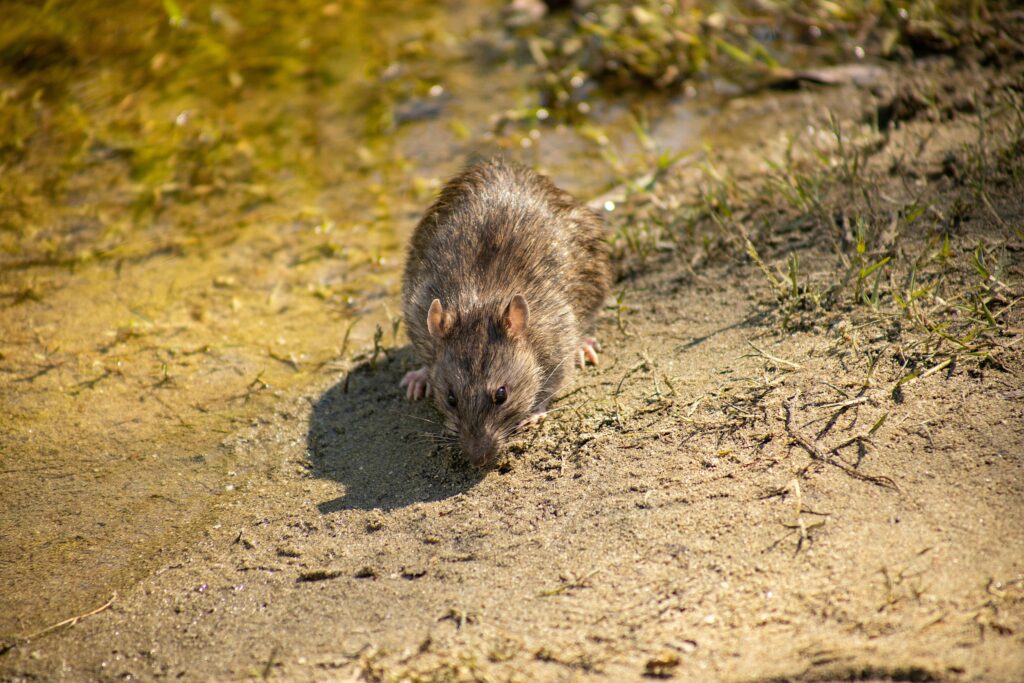Hidden Carriers: Unveiling How Rats Transmit Diseases to Humans
Rats have been notorious throughout history, not just for their cunning nature, but more so for their role as vectors in spreading deadly diseases. As ubiquitous dwellers of both urban and rural environments, these rodents create significant public health challenges. This article delves into the mechanisms through which rats transmit diseases to humans, the specific pathogens involved, and practical advice for mitigating these health risks.
The Disease Transmission Mechanisms
1. Direct Contact:
Rats can directly spread disease through bites and scratches. Their saliva contains numerous pathogens, and a bite can transmit diseases like rat-bite fever or even potentially lethal infections such as the plague.
2. Indirect Contact:
More commonly, humans contract diseases from rats through indirect contact with environments contaminated by their urine, droppings, or nesting materials. Diseases spread this way include leptospirosis, which can cause severe kidney damage and liver failure, and hantavirus, which can lead to respiratory diseases with high mortality rates.
3. Vector-Borne Transmission:
Rats also act as hosts for fleas and ticks, which can themselves carry diseases. The most infamous example is the bubonic plague, primarily transmitted to humans by fleas that have fed on infected rats. This mechanism highlights the complex web of interactions in rat-borne disease ecosystems.
Key Diseases Spread by Rats
Leptospirosis:
This bacterial infection spreads through water or soil contaminated with the urine of infected rats. Symptoms range from mild, flu-like symptoms to severe, life-threatening illnesses.
Hantavirus:
Transmitted through inhalation of dust contaminated by rat urine or droppings, hantavirus can cause severe respiratory infections, known as hantavirus pulmonary syndrome (HPS).
Bubonic Plague:
Often associated with historical pandemics, the plague remains a concern in many parts of the world. It is primarily spread by flea bites, with fleas having fed on infected rats.
Rat-Bite Fever:
This disease can result from a bite or scratch from an infected rat, or contact with a dead rat. It is caused by two different bacteria, with symptoms including fever, muscle pain, vomiting, and headache.
Mitigating the Risks
Environmental Control:
Reducing rat populations is crucial. This can be achieved through improved sanitation, regular garbage collection, and minimizing food sources that attract rats.
Personal Protection:
Using protective gear when handling rat-infested materials and ensuring pets are also protected from rat-borne diseases can reduce direct transmission risks.
Community Awareness:
Educating the public about the risks associated with rats and the signs of rat infestation can lead to earlier interventions and reduce the spread of diseases.
Conclusion
Rats are more than just a nuisance; they are a serious public health risk due to their ability to spread multiple diseases. Understanding the methods of transmission and taking proactive measures can greatly reduce the health threats posed by these hidden carriers. As we continue to encroach on natural habitats, and as climate change potentially expands the habitats of rats, ongoing vigilance and public health efforts remain crucial to controlling the diseases associated with these pervasive pests.
Pathway to Pandemics: Tracking the Role of Rats in Disease Outbreaks

Introduction
Rats have been infamously known throughout history not just for their cunning and survival skills, but for their ability to transmit infectious diseases to humans. From the bubonic plague to leptospirosis, these rodents have played pivotal roles in shaping human health and settlements. This article delves into the crucial ways in which rats contribute to disease outbreaks, how these pathogens are transmitted, and what preventive measures can be taken to mitigate these risks.
1. Historical Perspectives: Rats as Disease Vectors
The relationship between rats and human diseases is deeply rooted in history. The most notorious example is the Black Death in the 14th century, where fleas on rats transmitted the Yersinia pestis bacterium, wiping out an estimated one-third of Europe’s population. But the plague was just the beginning; over the centuries, rats have been linked to multiple outbreaks, serving as a grim reminder of their impact on public health.
2. Understanding the Transmission Mechanisms
Rats spread diseases through several pathways, but the primary method is through their urine and feces. Diseases like leptospirosis are spread when rat urine comes into contact with water sources or soil, subsequently infecting people through abrasions on their skin or through the mucous membranes. Another significant transmission method is through rat bites or scratches, which can directly introduce pathogens into the human body.
In addition to these direct methods, rats also spread disease indirectly by harboring ticks, fleas, and mites, which can transmit diseases from rats to humans. These vector-borne diseases are particularly difficult to control because they involve multiple species in the transmission cycle.
3. Diseases Attributed to Rats
Several significant diseases attributed to rats include:
- Bubonic Plague: Already mentioned, it’s transmitted by flea bites with fleas that have fed on infected rats.
- Leptospirosis: It can cause severe health problems like kidney damage and meningitis.
- Hantavirus: Transmitted through inhalation of dust contaminated with rat urine or droppings.
- Rat-Bite Fever: As the name suggests, it is transmitted by bites or scratches from infected rats.
- Salmonellosis: Caused by consuming food or water contaminated with infected rat feces.
4. Global Impact and Recent Outbreaks
The role of rats in disease outbreaks remains significant in many parts of the world, particularly in densely populated urban areas where close cohabitation between humans and rats exacerbates the risk. Recent outbreaks of leptospirosis in various metropolitan cities have been linked to increasing rat populations, which are often driven by urban sprawl and poor waste management.
5. Mitigating the Risks: Prevention and Control
Preventing rat-related diseases involves a combination of community effort and public health strategies. Key measures include:
- Urban Sanitation: Improving garbage disposal systems to reduce food sources for rats.
- Building Maintenance: Sealing buildings to prevent rat infestations.
- Public Education: Informing the public about the risks and the importance of hygiene.
- Pest Control Programs: Implementing rodent control programs that include trapping, baiting, and population surveillance.
Conclusion
Understanding the pathways through which rats spread disease is crucial for preventing future pandemics. By combining rigorous public health policies with community-based prevention methods, the risk posed by these resilient creatures can be significantly mitigated. As urban populations continue to grow, proactive measures will be essential to keep rat populations under control and prevent the diseases they carry from becoming a common threat.
Beyond the Bites: Other Ways Rats Can Spread Infectious Diseases
Rats have been infamous for centuries as carriers of deadly diseases. The mere mention of these rodents conjures images of the bubonic plague and other dire epidemics throughout history. However, while many people are aware that rat bites can transmit diseases, fewer realize that these small creatures can spread illnesses in a variety of other ways. Understanding the full scope of how rats can indirectly affect human health is crucial for preventing potential outbreaks and maintaining public health security.
1. Pathogens in Rat Fur: A Vehicle for Disease
One of the lesser-known methods through which rats can spread disease is via their fur. Rats are often infested with fleas and ticks that can carry a range of serious illnesses, such as typhus, plague, and spotted fever. As rats move through garbage and sewers, they collect pathogens on their fur, which can then be transferred to human environments when they invade homes and businesses. Simply the act of a rat scurrying across surfaces can leave behind traces of bacteria and viruses, which humans can unknowingly touch and then introduce to their mouths or eyes.
2. Contaminated Droppings: A Potent Source of Disease
Rat droppings are another major health hazard and a prominent vehicle for the spread of diseases such as hantavirus and leptospirosis. These droppings can be particularly dangerous because they often go unnoticed and gradually dry out. Once dry, they can crumble into dust and become airborne, making it easy for the pathogens they contain to be inhaled by humans, especially in confined spaces like attics or basements where rats may nest.
3. Urine Trails: Invisible Pathways to Infection
Similar to droppings, the urine of rats contains pathogens that can transmit diseases like leptospirosis or the Seoul virus. Rats frequently urinate to mark their pathways. When humans come into contact with surfaces where rats have urinated, they can unknowly transfer these pathogens to their mouths or eyes. Moreover, rat urine can seep into water sources or food supplies, posing a significant risk to human health if ingested.
4. Indirect Transmission via Contaminated Food
Perhaps the most common way rats spread diseases is through contamination of food supplies. Rats scavenge for food in trash bins and storage areas and can contaminate food with their saliva, droppings, or urine. Diseases such as salmonellosis are frequently spread this way. Eating food that has been contaminated by rats can lead to serious gastrointestinal and other systemic infections.
5. Nesting Materials: Breeding Grounds for Mold and Pathogens
Rats build nests from collected materials like paper, fabric, and dried plant matter. These nesting materials can harbor fungi and a variety of pathogens. When disturbed, these materials can release mold spores and bacteria into the air, creating a risk for respiratory infections and other health problems in humans.
Preventive Measures and Solutions
To mitigate these risks, it is essential to adopt comprehensive rodent control strategies. Here are a few practical steps that can be taken:
- Regular Inspection: Regularly inspect homes and buildings for signs of rodent infestation, such as droppings, nesting materials, and gnaw marks.
- Sanitation: Keep living and work environments clean. Store food in rodent-proof containers and dispose of garbage regularly in sealed bins.
- Exclusion Techniques: Seal any cracks and holes in buildings that could serve as entry points for rats. Use steel wool and caulking to close off access points.
- Professional Help: Consider hiring a professional pest control service to handle severe infestations effectively.
By understanding the various ways in which rats can spread infectious diseases beyond direct bites, individuals and communities can better prepare and protect themselves from the potential health risks associated with these pervasive pests.

Preventive Measures: Strategies to Minimize Health Risks from Rat Infestations
Rat infestations can pose significant health risks to humans, spreading diseases such as leptospirosis, hantavirus, and salmonellosis. To safeguard your health and your environment, it is crucial to implement effective strategies to prevent and control rat populations. This article explores practical measures that homeowners and community members can adopt to minimize these risks.
Understanding Rat Behavior
Before diving into prevention strategies, it’s important to understand some basics about rat behavior. Rats are attracted to areas that provide easy access to food and water and have good hiding spots for shelter and nesting. They are excellent climbers and can squeeze through holes as small as a quarter, making nearly any space accessible to them.
1. Sanitation: The First Line of Defense
- Secure Food Sources: Always store food in sealed containers, and never leave food out unattended. Regularly dispose of garbage in tightly covered bins.
- Maintain Cleanliness: Reduce clutter and regularly clean areas of your home, particularly kitchens and storage areas where food residues might accumulate.
2. Rat-Proofing Your Home
- Seal Entry Points: Conduct a thorough inspection of your home’s exterior. Seal any cracks, crevices, and entry points larger than a quarter with sturdy materials such as metal sheets, wire mesh, or concrete.
- Trim Vegetation: Keep shrubs and trees trimmed away from your home to eliminate climbing points.
3. Water Control
- Eliminate Water Sources: Fix leaky faucets and ensure that drainage areas are clear and functional. Rats need water to survive, so eliminating these sources can deter their presence.
4. Natural and Chemical Repellents
- Use Natural Repellents: Certain smells, like peppermint oil, citronella, and ammonia, are known to repel rats. Soak cotton balls in these oils and place them in areas prone to rat activity.
- Employ Rodenticides Carefully: If natural repellents are ineffective, you might consider rodenticides. Use these chemicals according to manufacturer instructions and keep them away from children and pets.
5. Monitoring and Maintenance
- Regular Inspections: Regularly inspect your property for signs of rat activity such as droppings, nests, or gnawed materials. Early detection can prevent serious infestations.
- Professional Pest Control: For persistent problems or large infestations, professional pest control can provide more comprehensive solutions tailored to your specific situation.
6. Community Actions
- Neighborhood Clean-up Initiatives: Participate in or organize community clean-ups to reduce overall environmental factors that attract rats.
- Education Campaigns: Educate your community about the risks associated with rat infestations and the importance of collective preventive measures.
Conclusion
Preventing rat infestations requires a multifaceted approach focused on sanitation, physical barriers, and proactive monitoring. By implementing these strategies, you can significantly reduce the risk of disease and maintain a healthier living environment. Remember, collective efforts often yield the best results in controlling rat populations effectively and sustainably.




